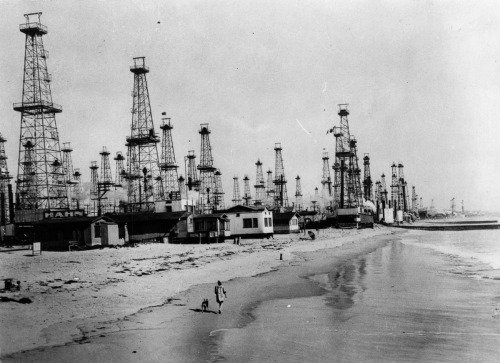This Is Just Great.

This is just great.
More Posts from Dotmpotter and Others
Amazing Maps of the World

Artificial optical materials could allow cheaper, flatter, more efficient detectors for night vision and other uses
A new way of taking images in the mid-infrared part of the spectrum, developed by researchers at MIT and elsewhere, could enable a wide variety of applications, including thermal imaging, biomedical sensing, and free-space communication.
The mid-infrared (mid-IR) band of electromagnetic radiation is a particularly useful part of the spectrum; it can provide imaging in the dark, trace heat signatures, and provide sensitive detection of many biomolecular and chemical signals. But optical systems for this band of frequencies have been hard to make, and devices using them are highly specialized and expensive. Now, the researchers say they have found a highly efficient and mass-manufacturable approach to controlling and detecting these waves.
The findings are reported in the journal Nature Communications, in a paper by MIT researchers Tian Gu and Juejun Hu, University of Massachusetts at Lowell researcher Hualiang Zhang, and 13 others at MIT, the University of Electronic Science and Technology of China, and the East China Normal University.
The new approach uses a flat, artificial material composed of nanostructured optical elements, instead of the usual thick, curved-glass lenses used in conventional optics. These elements provide on-demand electromagnetic responses and are made using techniques similar to those used for computer chips. “This kind of metasurface can be made using standard microfabrication techniques,” Gu says. “The manufacturing is scalable.”
Read more.

‘Wired Microbes’ Act as Power Plants, Converting Sewage to Energy
KARMA POLICE: GCHQ's plan to track every Web user in the world

The KARMA POLICE program is detailed in newly released Snowden docs published on The Intercept; it began as a project to identify every listener to every Internet radio station (to find people listening to jihadi radio) and grew into an ambitious plan to identify every Web user and catalog their activities from porn habits to Skype contacts.
The program began in 2007/8 and it mined BLACK HOLE, which is GCHQ’s repository for all the data sucked up by its fiber taps (which it calls “probes”). It attempted to map IP addresses to peoples’ identities, and cross reference users’ identities on various systems and in various locations, collecting them into “a web browsing profile for every visible user on the Internet.”
Part of this was accomplished by looking at a users’ cookies – if you log into Google on your phone and your laptop, GCHQ use its surveillance views into that cookie to connect all the traffic from your laptop and phone with a single identity. The agency exploited cookies from a wide variety of popular websites that put like/share buttons, beacons, and other assets on a many other sites. The targeted cookies came from Google, Microsoft, Facebook, Reddit, the BBC, Amazon, WordPress, Yahoo, and others.
KARMA POLICE drew on a frankly bewildering array of other programs, which sucked up data from a variety of sources. These programs were given exotic codenames by GCHQ: SOCIAL ANTHROPOID, MEMORY HOLE, MARBLED GECKO, INFINITE MONKEYS, etc. These logged different kinds of Internet events – search queries, Google Maps searches, and BBS/message-board posts.
The UK spy agency had an extraordinary view into the world’s Internet traffic thanks to the number of oceanic fiber links that make landfall in the UK.
Like the NSA, GCHQ relied on secret interpretations of the laws on spying to paper over its activities, so that it could tell its governmental overseers that all its activities were lawful. It amassed records on people from all over the world, including Britons, and routinely allows its spying partners to search its databases. The US NSA, as well as spy agencies from Canada, Australia, and New Zealand all have access to its data on British citizens and people from all over the world.
Read the rest
An Urbanizing Planet
The video, entitled An Urbanizing Planet, takes viewers on a stunning satellite-viewed tour around our planet. By combining more than 10 datasets, and using GIS processing software and 3D graphic applications, the video shows not only where urbanization will be most extensive, but also how the majority of the expansion will occur in areas adjacent to biodiversity hotspots.
The video was produced to present the framework of a new book Global Urbanization, Biodiversity, and Ecosystems: Challenges and Opportunities — A Global Assessment. The scientific foundation of the Cities and Biodiversity Outlook project, the book presents the world’s first assessment of how global urbanization and urban growth impact biodiversity and ecosystems. It builds on contributions by more than 200 scientists worldwide.










Drilling for oil on Venice Beach | Via
Native Americans first discovered oil in California, as it seeped to the surface of the earth. They used it as a lubricant and sealant for canoes. It was later used for similar purposes by Spanish colonizers.
As the state’s population boomed in the decades following the gold rush of 1849, there was a rapidly growing demand for petroleum.
Drilled in 1876, the first commercially successful oil well in California was Well No. 4 in the Pico Canyon Oilfield in the Santa Susana Mountains.
More discoveries followed, from the Los Angeles City Oil Field in 1892 to Huntington Beach in 1920 and Long Beach in 1921.
By 1920, California was producing 77 million barrels of oil a year, and vast stretches of the state were occupied by derricks, drilling rigs and refineries.
In places such as Venice, California (now known as Marina del Rey), oil derricks ran right up to the shore, mingling with residential neighborhoods and pristine beaches.

Picture Quote Of The Day: #life. You are…
View more Nina Dobrev on WhoSay
Meet Hannah Herbst, a 15-year-old from Boca Raton, Florida, who just might be the nation’s top young scientist. Earlier this month, Herbst won a $25,000 prize with a very cheap invention: a prototype probe that converts the movement of the ocean’s currents into energy and costs just $12 to make. Out of nine other middle-school finalists, Herbst was awarded first place in the 2015 Discovery Education 3M Young Scientist Challenge.
This 15-Year-Old’s Invention Converts Ocean Currents Into Energy—for Cheap | GOOD

Iceland to Help Develop Geothermal Energy in Ethiopia
-
 lucasscholder liked this · 8 years ago
lucasscholder liked this · 8 years ago -
 meister-marrow reblogged this · 8 years ago
meister-marrow reblogged this · 8 years ago -
 meister-marrow liked this · 8 years ago
meister-marrow liked this · 8 years ago -
 hellishsprite reblogged this · 8 years ago
hellishsprite reblogged this · 8 years ago -
 sendicard liked this · 8 years ago
sendicard liked this · 8 years ago -
 if-your-nerve-deny-you reblogged this · 8 years ago
if-your-nerve-deny-you reblogged this · 8 years ago -
 mumblingtruth reblogged this · 9 years ago
mumblingtruth reblogged this · 9 years ago -
 lifeisnod-eezy reblogged this · 9 years ago
lifeisnod-eezy reblogged this · 9 years ago -
 gloomgooon reblogged this · 10 years ago
gloomgooon reblogged this · 10 years ago -
 littleredrobinhood reblogged this · 10 years ago
littleredrobinhood reblogged this · 10 years ago -
 parkersprout liked this · 10 years ago
parkersprout liked this · 10 years ago -
 thistlecat liked this · 10 years ago
thistlecat liked this · 10 years ago -
 wuuohh reblogged this · 10 years ago
wuuohh reblogged this · 10 years ago -
 waffletardage reblogged this · 10 years ago
waffletardage reblogged this · 10 years ago -
 hipsmart reblogged this · 10 years ago
hipsmart reblogged this · 10 years ago -
 leahj reblogged this · 10 years ago
leahj reblogged this · 10 years ago -
 sarahb liked this · 10 years ago
sarahb liked this · 10 years ago -
 jratlee reblogged this · 10 years ago
jratlee reblogged this · 10 years ago -
 rmblr reblogged this · 10 years ago
rmblr reblogged this · 10 years ago -
 rmblr liked this · 10 years ago
rmblr liked this · 10 years ago -
 amotion liked this · 11 years ago
amotion liked this · 11 years ago -
 knueffelbund liked this · 11 years ago
knueffelbund liked this · 11 years ago -
 johnpaulchirdon liked this · 11 years ago
johnpaulchirdon liked this · 11 years ago -
 hayleyfiasco liked this · 11 years ago
hayleyfiasco liked this · 11 years ago -
 kunaltandon liked this · 11 years ago
kunaltandon liked this · 11 years ago -
 whitneymcn reblogged this · 11 years ago
whitneymcn reblogged this · 11 years ago -
 benovicbradley liked this · 11 years ago
benovicbradley liked this · 11 years ago -
 lunar liked this · 11 years ago
lunar liked this · 11 years ago -
 crimsonblackrose reblogged this · 11 years ago
crimsonblackrose reblogged this · 11 years ago -
 captainmattie reblogged this · 11 years ago
captainmattie reblogged this · 11 years ago -
 gnirps reblogged this · 11 years ago
gnirps reblogged this · 11 years ago -
 tomaskafka liked this · 11 years ago
tomaskafka liked this · 11 years ago -
 hermitsunited liked this · 11 years ago
hermitsunited liked this · 11 years ago -
 avalonawoken reblogged this · 11 years ago
avalonawoken reblogged this · 11 years ago -
 starman-nolith liked this · 11 years ago
starman-nolith liked this · 11 years ago -
 10poundsofgold liked this · 11 years ago
10poundsofgold liked this · 11 years ago -
 petahthetheaterpirate reblogged this · 11 years ago
petahthetheaterpirate reblogged this · 11 years ago -
 petahthetheaterpirate liked this · 11 years ago
petahthetheaterpirate liked this · 11 years ago -
 conquistadoratheexplora reblogged this · 11 years ago
conquistadoratheexplora reblogged this · 11 years ago -
 little-sister-shotgun reblogged this · 11 years ago
little-sister-shotgun reblogged this · 11 years ago -
 officiallallorona liked this · 11 years ago
officiallallorona liked this · 11 years ago -
 fratboyhemmatron reblogged this · 11 years ago
fratboyhemmatron reblogged this · 11 years ago -
 levon76 reblogged this · 11 years ago
levon76 reblogged this · 11 years ago -
 scdub liked this · 11 years ago
scdub liked this · 11 years ago
